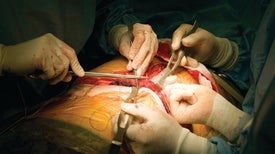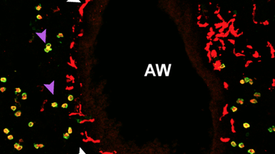
Machine That Keeps Livers Alive for a Week Can Repair Damaged Organs
A new device could ultimately increase the number of usable livers for transplants and could perhaps preserve other types of organs

A new device could ultimately increase the number of usable livers for transplants and could perhaps preserve other types of organs

Dressing material uses carbon nanofibers to aid healing

An inexpensive assay based on the technique can provide yes or no answers in under an hour—perhaps even in the home soon

A scaly sea creature called a chiton sparks an idea for new protective gear

The jury-rigged breathing aid, invented to deal with ventilator shortages, is now being tested as a kinder, gentler alternative to a tube in the trachea

RNA sequencing has shown a previously unknown dimension to the way malignant cells work—which could lead to novel treatments

As hospitals beg for protective gear and ventilators, some individuals are taking a creative approach to the problem

In mice, a test for lung cancer involves nanoprobes that recognize tumors and send reporter molecules into the urine for simple analysis.

The new method may be faster and easier than other genetic storage attempts

As the first clinical trial results trickle in, researchers look ahead to more sophisticated medical applications for genome editing

Coronavirus research requires high-containment labs. Journalist Elisabeth Eaves talks with Scientific American contributing editor W. Wayt Gibbs about her article “The Risks of Building Too Many Bio Labs,” a joint project of the New Yorker and the Bulletin of the Atomic Scientists ...

In mice, these white blood cells tamp down inflammation in the lungs

Testing kits delivered by courier and digital tools combine to battle the COVID-19 outbreak

The experiment tests a gene-editing therapy for a hereditary blindness disorder

Making changes to the molecular messengers that create proteins might offer flexible therapies for cancer, pain or high cholesterol, in addition to genetic disorders

Successfully applying AI to biomedicine requires innovators trained in contrasting cultures

The pharmaceutical industry is in a drug-discovery slump. How much can AI help?

Deep-learning algorithms are peering into MRIs and x-rays with unmatched vision, but who is to blame when they make a mistake?

By channeling a flood of biomedical data, machine learning could transform basic research and clinical practice
Support science journalism.

Thanks for reading Scientific American. Knowledge awaits.
Already a subscriber? Sign in.
Thanks for reading Scientific American. Create your free account or Sign in to continue.
Create Account